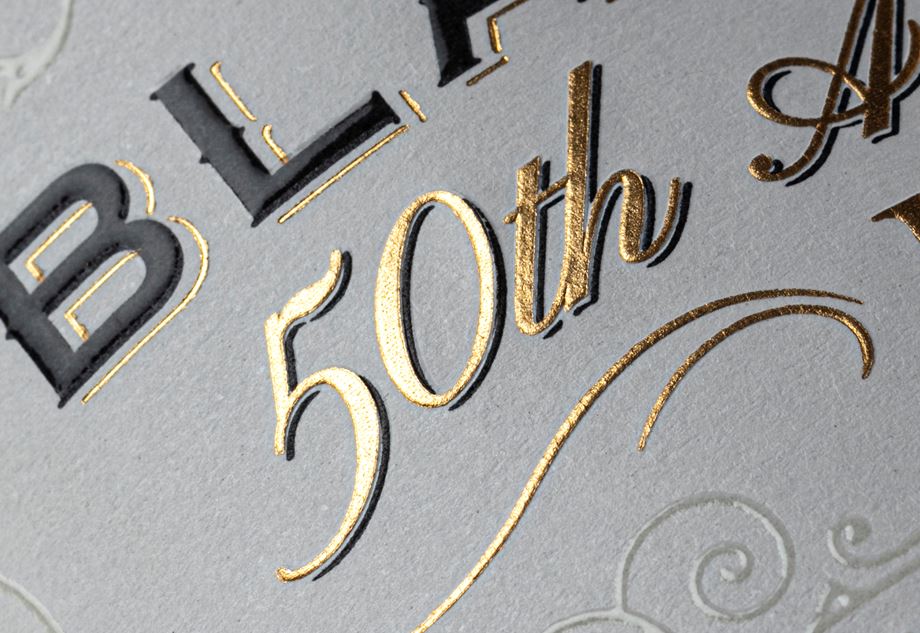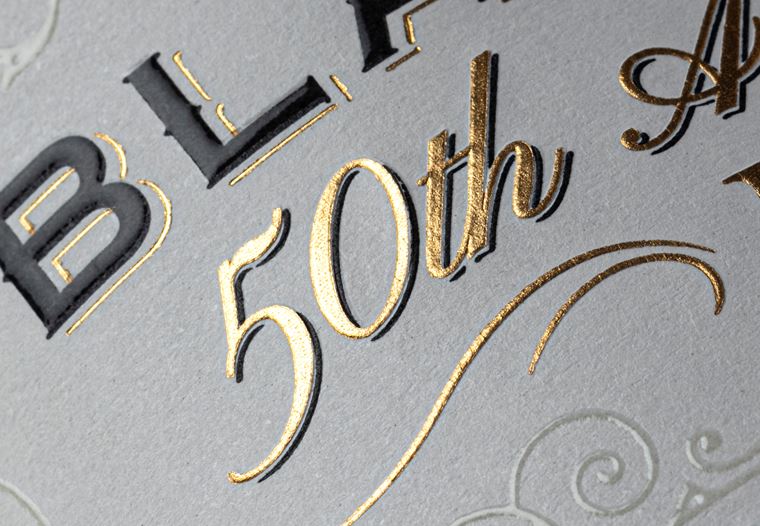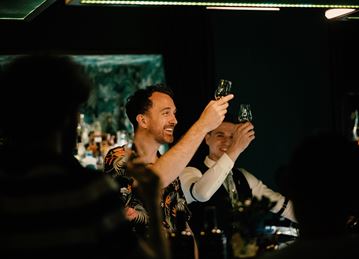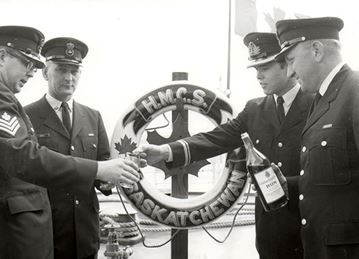

Our Journey
50 Years of Black Tot Day: Recreating the Navy Blend

If you’ve ever heard of ‘navy rum’, chances are you’ve heard a myriad of different stories describing exactly what it isn’t. Various ABVs, different stills, countries that are and aren’t a part of the blend – it’s confusing at best, misleading (or completely made up) at worst. Navy Rum as an entity continually evolved, perpetually influenced by the various rum supplies available throughout the world. For navy rum, when it was is the most important factor in understanding what it was.
In the early days of the ration, navy rum was often not a blend at all, with each ship left to procure whatever provisions it could from port to port. Barrels of all wood types and previous fills would have been dropped off, exchanged for filled ones. The rum you drank would depend on the island you stopped at. But in the early 1800s, that was all set to change.
In London, giant blending vats were being constructed. Connected by pipes a third of the way up, these open-topped wooden vats made for an excellent depository for rum. Victualling yards set up to procure goods for the navy would put out tenders for however much rum was required, and merchants would bid for the winning contract. Over the years, records show rum in evidence from all across the Caribbean. Guyana was a constant presence throughout the entirety of the Navy Rum blend, with Trinidad, Barbados, and Jamaica playing their own significant roles at certain points throughout its history.
In the Caribbean we even see rums included from outside Britain’s colonial strongholds, from Martinique to Cuba. Further afield, rums from Africa, Indonesia, Asia, and even as far as Australia were all added to the naval rum blend, making it one of the first ever examples of a ‘world’ blended spirit – and certainly the first rum of its kind to bring together liquid from every rum-producing continent.
The rum brought in would have been shipped in all different types of barrels, which had previously contained all sorts of different alcohols – the virgin oak barrel rule of bourbon would not become legislation until 1938, so there would have been a huge variety available. Not only would there have been a wider influence of flavours upon the rum, but ageing barrels at sea would create additional movement inside the barrel, increasing the rum’s interaction with the wood itself, while the additional movement of oxygen would increase esterification.
As all the rum imported into London would have come in at different proof, it was necessary to standardise the spirit’s ABV before it was issued onto ships. This was in order to allow for a consistent allocation of booze, as well as making it easy for each ship’s purser to measure and water down the booze for the daily grog. You will have probably heard stories about ships only taking over-proof spirits on board, so that the gunpowder would still light, but ‘navy strength’ was actually very slightly ‘underproof’.
So what exactly was ‘navy strength’? Navy Issuing Strength was 54.5% ABV, or 4.5 degrees (read ‘percent’) under proof. What is proof? In English terms, proof would be set at 57.15% ABV. As navy strength was 4.5 degrees under proof, you multiply 57.15 by 0.955 to reach 54.5.
It should be noted that the logistical necessity established by bringing rum back to London first, blending and watering it down, then reissuing the rum to the fleet, changed forever the way in which rums were blended and put together. In whisky, for example, there was never the need to have a central melting pot, blending Irish with Scotch and American – each region was able to quite firmly lay down its own style and regulation, encouraging ageing and bottling to take place in country of origin. Rum however was primarily an export, either enjoyed unaged (and undiluted) on the island, or else put in a barrel to be aged and bottled overseas. Today, while we are seeing more and more rum-producing countries and distilleries setting up their own bottling facilities and focusing on tropical ageing, the precedents set over more than 300 years mean that a vast amount of rum still purchased today is shipped as bulk and aged in Europe.
Many of the distilleries that originally created rum for the Navy Blend no longer exist, though in some cases a little of their rum survives. Famous distilleries like Caroni in Trinidad had large reserves that were bought up after their closure and are still being aged and released to this day. In Guyana, many of the historic stills that would have originally produced rum for the Navy Blend survive at the Diamond distillery, and are still making the original marques of rum they made all those years ago.
But what became of the Royal Navy blend itself? After Black Tot Day, there was still a sizeable amount of rum left over. This was stored for the most part in one-gallon (4.5 litre) stone jars and held in warehouses in London dockyards from 1970 until 1994, when they were sold on to create space. The jars made their way to various investors, merchants, and collectors around the world – until Whisky Exchange co-founder Sukhinder Singh was offered the chance to buy one by a former Naval officer.
Sukhinder soon discovered just how many of these jars were still in existence and began two-year search to track them down, taste and assess them. The quality, he found, was exceptional. You might be forgiven for thinking that navy rum anything but exceptional, given it was little more than a service provision, yet thanks to older production methods – think pots and smaller, traditional columns rather than industrial ones – plus the barrels and ageing methods used, the quality was high. Truly, there can never be a rum exactly like it given today’s production methods.
Are there any real navy rums still available? When we launched Black Tot in 2010, we released the ‘Last Consignment’ – a bottling of the last remaining flagons Sukhinder had collected. It remains one of the only genuine Navy Rum bottlings available in the world, but this rum is finite, and there is only a limited amount left before it is gone forever – for any rum lover, Black Tot Last Consignment is arguably one of the bucket-list rums, for the history as well as the flavour.
With the 50th Anniversary of Black Tot Day, we wanted to create something to keep the legacy of the Navy blend alive. Rather than just create a one-off edition our head blender Oliver Chilton, has laid down a rum that will be the foundation of the Black Tot Day anniversary blends for years to come. He incorporated casks from Diamond in Guyana, Trinidad Distillers, Foursquare Distillery in Barbados, and Hampden Estate in Jamaica along with a 42-year-old Port Mourant distilled in 1975, and a 23-year-old Caroni and even rums from the original Navy Rum flagons. 5000 bottles of the special anniversary release - Black Tot 50th Anniversary - were bottled at 54.5% ABV – full Navy Strength.
A third of this blend, however, has been put aside to become the basis of this year’s Black Tot Anniversary blend. Just as the Royal Navy continually added to their rum blend, evolving the flavour year on year, the Black Tot blend will continue to grow, incorporating the full spectrum of countries around the world.
Navy blends were never intended to be a secret recipe, and in keeping with the rum industry’s move towards more transparency, you’ll find on our 50th Anniversary bottle label a full breakdown of the blend, allowing you to appreciate the influence each component has on the whole. Furthermore, for those joining us for the long haul, next year you’ll be able to see how the blend evolves, and which new delicious casks get added.
Keep a look out for virtual tastings we’ll be doing including Black Tot 50th Anniversary so that you can taste along at home before picking up your very own bottle – we can’t wait to show you what we’ve been working on.
Written by Mitch Wilson, Global Ambassador for Black Tot Rum




